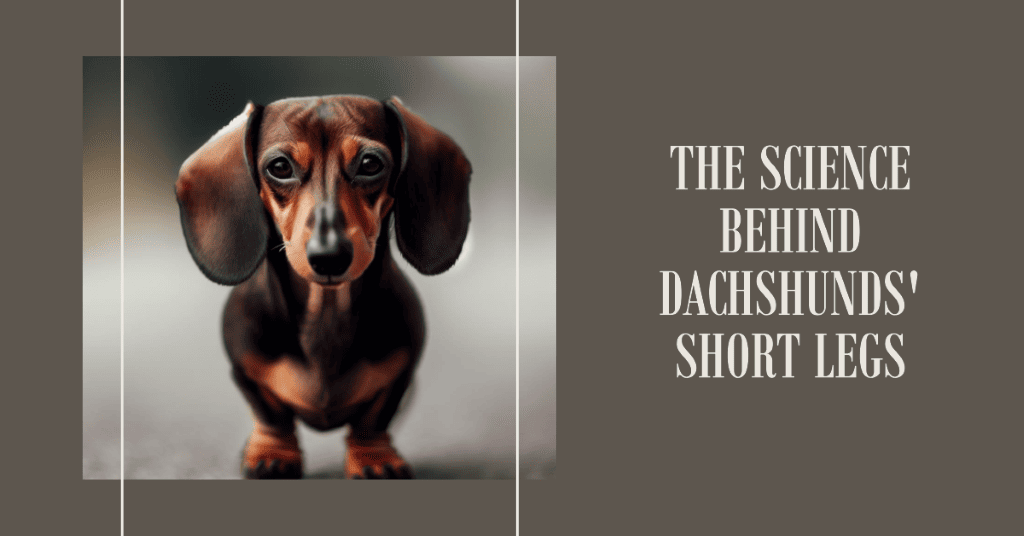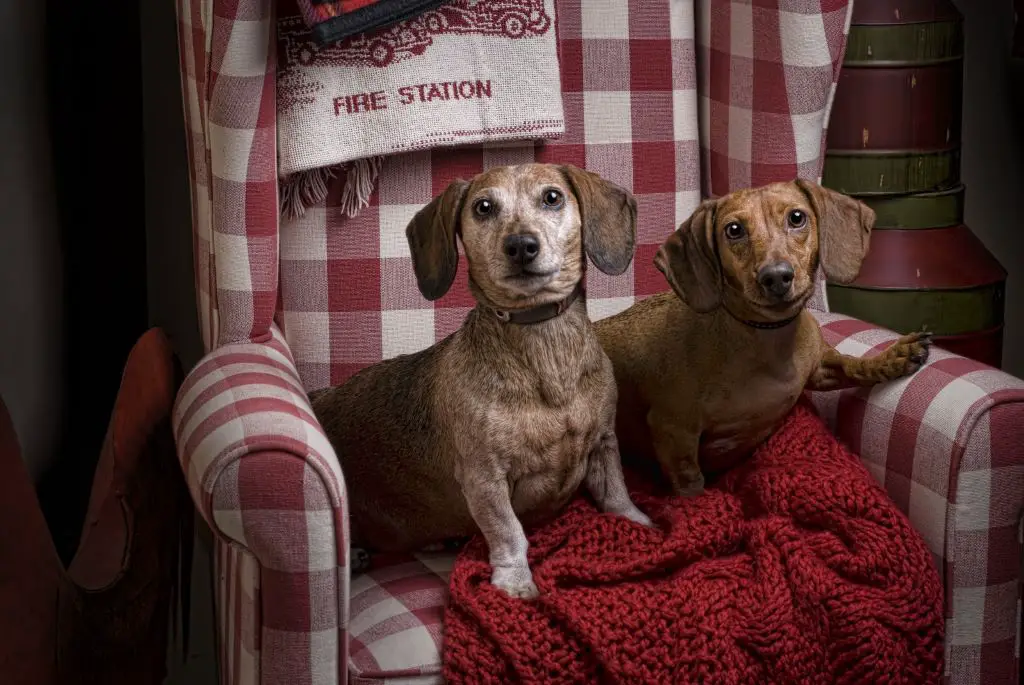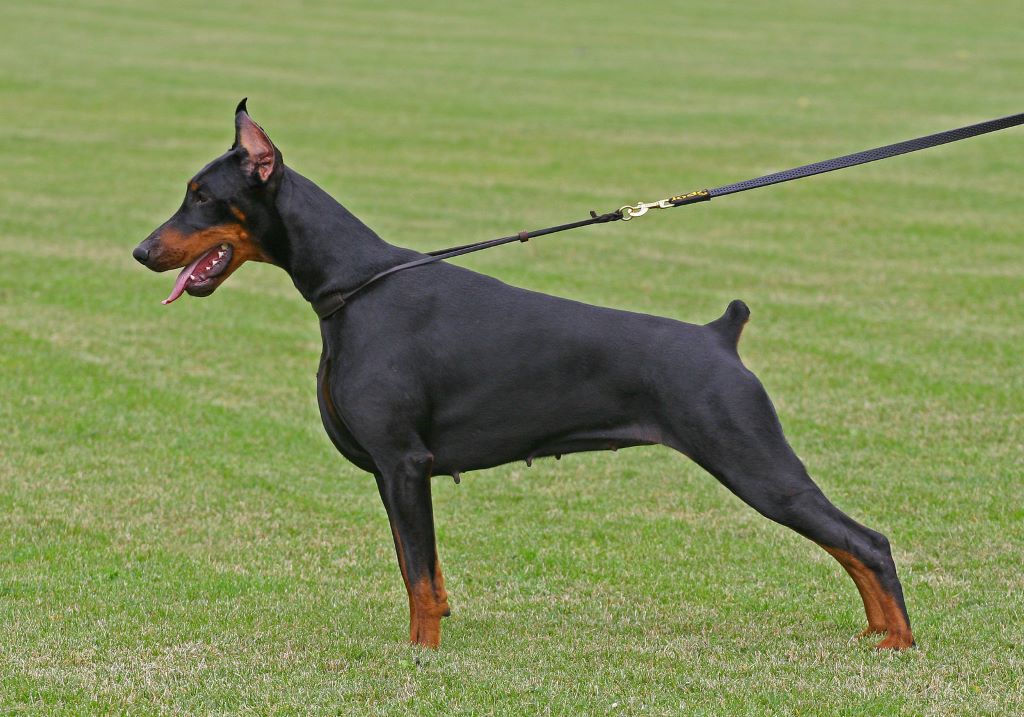Are you ready to dive into the fascinating world of dachshunds and uncover the mystery behind their adorable, yet peculiar, short legs? Prepare to embark on a journey filled with wonder and curiosity as we explore the reasons behind this unique trait.
Like a puzzle waiting to be solved, the genetic makeup of these little dogs holds the key to their short stature. But it’s not just about looks; there are advantages and disadvantages to having short legs. As we delve deeper, we’ll discover the impact these limbs have on their health and well-being.
But let’s not forget about their evolutionary history, which sheds light on how dachshunds came to be. And if you already have one of these delightful creatures as a companion, we’ll provide you with valuable tips on exercise, grooming, and care.
So, sit back, relax, and let’s unravel the enchanting mystery of why dachshunds have those irresistibly adorable, short legs.
Why Are Dachshunds Short?
Ever wondered why Dachshunds have those adorable short legs? Let’s dive into the fascinating reason behind their unique physique!
Dachshunds have short legs because they were bred that way. Their short-legged, long body and short legs are a result of a genetic condition known as achondroplasia.
Achondroplasia is a condition that affects bone growth, causing the limbs to be shorter than normal. In the case of Dachshunds, this genetic condition was intentionally selected for during the breeding process. The breeders wanted to create a dog that was small and could fit into burrows to hunt badgers. By having short legs, Dachshunds were able to navigate through tight spaces and dig into burrows without getting stuck.
This unique physical trait has become a defining characteristic of the Dachshund breed. Their short legs not only make them incredibly cute, but also serve a practical purpose. Dachshunds are still used today for hunting small game, and their short legs allow them to excel in this task.
Genetic Reasons for Short Legs
Surely you’ve wondered why dachshunds possess such petite paws, and the answer lies in their genetic makeup. These adorable little dogs have short legs due to a genetic condition called chondrodysplasia, which causes dwarfism.
Here are four key points to help you understand why dachshunds have short legs:
- Genetic mutation: Dachshunds have a gene mutation that affects the development of their bones, resulting in shorter limbs. This mutation is responsible for their unique appearance and cute waddling gait.
- Selective breeding: Breeders have intentionally selected dachshunds with shorter legs over generations, perpetuating the characteristic and enhancing their cuteness. This selective breeding has further contributed to their distinct physical trait.
- Health implications: While dachshunds’ short legs may seem adorable, they are also prone to certain health issues. The dwarfism caused by chondrodysplasia can lead to complications like intervertebral disc disease, where the discs between the vertebrae can become herniated or degenerate.
- Adaptation: Despite their short legs, dachshunds are surprisingly agile and have adapted to their unique body structure. They are skilled hunters and were originally bred to track and flush out burrow-dwelling animals like badgers.
So, next time you see a dachshund with its short legs, remember that it’s not just about aesthetics. Their genetic makeup and selective breeding have shaped their adorable appearance, but it’s important to be mindful of the potential health concerns associated with their unique physique.
Advantages of Short Legs
Despite their petite stature, dachshunds’ short legs offer them a surprising advantage that will melt your heart. These little pups may have stubby legs, but don’t let that fool you! Their unique physique actually serves a purpose and provides them with several benefits. Let’s dive into the advantages of their short legs and why they have become beloved companions for many.
Firstly, dachshunds were originally bred to hunt burrow-dwelling animals like badgers. Their short legs allow them to easily maneuver through narrow tunnels and tight spaces, making them excellent at flushing out their prey. This ability to navigate underground is a skill that not many other breeds possess.
Additionally, their low center of gravity provides dachshunds with stability and balance. This comes in handy during playful activities and agility exercises. They can swiftly change directions and make sharp turns without losing their footing. It’s like having a four-legged acrobat in your home!
To help visualize the advantages of dachshunds’ short legs, take a look at the table below:
| Advantage | Detailed Explanation |
|---|---|
| Superior Maneuverability | Thanks to their short legs, Dachshunds can navigate through narrow spaces with ease, making them excellent burrowers. |
| Exceptional Stability and Balance | Their low center of gravity, due to their short stature, contributes to their remarkable steadiness and agility. |
| Distinctive Playfulness | The short legs of Dachshunds add a unique charm to their movements, amplifying their endearing nature and playful demeanor. |
If you’re a fan of the corgi’s stubby legs or the charm of other short-legged breeds, you’ll surely appreciate the appeal of dachshunds. Their body and short legs may be small, but their personality and unique advantages are bound to win you over. So, if you’re looking for a companion that excels in both cuteness and agility, dachshunds are the perfect choice!
Health Issues Related to Short Legs
Chondrodysplasia is a condition that affects dachshunds with short legs, and it’s important to understand the health issues associated with it.
This condition can lead to various skeletal problems, such as spinal issues and joint abnormalities, which can cause pain and mobility issues for the dog.
By understanding chondrodysplasia, you can better care for your dachshund and take necessary precautions to ensure their overall well-being.
Understanding Chondrodysplasia
Although it may seem odd, dachshunds have short legs as if they were designed to conquer the world on their own terms. This unique trait is a result of a condition called chondrodysplasia, which affects their bone growth.
Chondrodysplasia is a form of dwarfism that causes the bones in the legs to develop shorter than usual. This condition is intentionally bred by dachshund breeders to achieve the characteristic low-slung appearance of the breed.
While it may be seen as a disadvantage, dachshunds have adapted remarkably well to their short legs. They are agile and can maneuver through small spaces with ease. Their short legs also give them a distinct advantage when hunting small game, allowing them to track and dig into burrows effortlessly.
Dachshunds’ Evolutionary History
Dachshunds’ short legs are a result of their fascinating evolutionary history. These adorable little dogs have a breed-specific condition called chondrodysplasia, which is responsible for their unique physical appearance. Chondrodysplasia is a genetic mutation that affects the growth and development of bones, resulting in shorter limbs.
The origins of the dachshund breed can be traced back to ancient civilizations, where they were initially bred for hunting purposes. Their short legs were actually an advantage in their hunting abilities, as they allowed the dogs to burrow into tunnels and chase small prey underground. Over time, these traits were selectively bred, leading to the development of the dachshund as we know it today.
Dachshund’s evolutionary history is a testament to the incredible adaptability of nature. Through generations of selective breeding, these dogs have developed a unique body shape that serves a specific purpose. Their short legs not only make them excellent hunters but also give them a distinctive appearance that has charmed countless dog lovers around the world.
Exercise and Training for Dachshunds
Ready to have fun with your dachshund? Let’s explore some exercise and training tips for these adorable dogs!
Dachshunds may have short legs, but that doesn’t mean they can’t enjoy an active lifestyle. Regular exercise is essential for their overall well-being and can help prevent weight gain, which can put extra stress on their backs.
When it comes to exercise, dachshunds have a lot of energy to burn. Taking them for daily walks is a great way to keep them active and engaged. Start with shorter walks and gradually increase the distance as their stamina improves. Remember to always use a harness instead of a collar to prevent strain on their necks.
In addition to walks, dachshunds also enjoy playing games like fetch or tug-of-war. These activities provide not only physical exercise but also mental stimulation, which is important for their intelligence and happiness. Incorporating puzzle toys and treat-dispensing toys can also keep them entertained and mentally sharp.
When it comes to training, dachshunds are intelligent and eager to please. Positive reinforcement techniques, such as treats and praise, work best with these dogs. Use short and consistent training sessions to teach them basic commands like sit, stay, and come. Remember to be patient and consistent, as dachshunds can be stubborn at times.
Regular exercise and training are essential for dachshunds with their short legs. By incorporating walks, games, and positive reinforcement training techniques, you can keep your dachshund happy, healthy, and full of energy. So get out there and have some fun with your furry friend!
Grooming and Care for Dachshunds
Taking care of your Dachshund’s grooming needs is essential to keeping them healthy and happy. Start by brushing their short coat regularly to remove any loose hair and prevent matting. Dachshunds have a smooth, wire-haired, or longhaired coat, so be sure to choose the appropriate brush for their specific coat type.
It’s also important to trim their nails regularly to prevent them from becoming too long and causing discomfort. When it comes to bathing your Dachshund, it’s best to do so as needed. Use a gentle dog shampoo and make sure to thoroughly rinse their coat to avoid any irritation.
Pay special attention to their floppy ears, as they can be prone to infections. Regularly check and clean their ears to keep them clean and healthy. Lastly, don’t forget about dental care. Brushing your Dachshund’s teeth regularly will help prevent dental issues such as gum disease and tooth decay.
By following these grooming and care tips, you can ensure that your Dachshund’s short legs are well taken care of and that they’re always looking and feeling their best.

Unlock Better Skin & Joint Health For Your Dachshund
Dachshund Mixes and Crossbreeds
Are you curious about the unique and adorable characteristics of Dachshund mixes and crossbreeds and how they compare to purebred Dachshunds? Let’s explore the fascinating world of Dachshund mixes and discover what makes them so special.
- Variety of sizes: Dachshund mixes come in a range of sizes, from tiny teacup versions to larger breeds. These size variations offer a diverse selection of companions for any lifestyle.
- Playful personalities: Dachshund mixes inherit the playful and energetic personalities of their Dachshund parent. They love to chase toys, dig holes, and go on adventures with their human companions.
- Unique appearances: Dachshund mixes showcase a wide array of physical traits, making each one truly unique. You’ll find mixes with different coat colors, patterns, and textures, as well as a variety of ear shapes and sizes.
- Health benefits: Some Dachshund mixes have longer legs than their purebred counterparts, which can help reduce the risk of back problems commonly associated with Dachshunds. This is because longer legs provide better support and reduce strain on their backs.
When considering a Dachshund mix, it’s important to remember that their short legs are a result of the Dachshund breed’s genetic makeup. Their leg cartilage is specifically bred to be shorter, giving them their distinctive appearance. However, it’s crucial to ensure that the breeding process does not result in any health issues, such as dwarfism. Always choose a reputable breeder who prioritizes the overall health and well-being of their dogs.
Can dachshunds with short legs participate in agility competitions?
Yes, dachshunds with short legs can participate in agility competitions. Despite their short legs, they are agile and can navigate obstacle courses with proper training and conditioning.
Are there any health concerns specific to dachshunds with longer legs?
Dachshunds with longer legs are more prone to health concerns like spinal issues and joint problems. Around 25% of them develop intervertebral disc disease, which can cause pain, paralysis, and even death.
How do dachshunds’ short legs affect their ability to jump or climb stairs?
Dachshunds’ short legs can affect their ability to jump or climb stairs. Their small size and short legs make it harder for them to reach high places or climb stairs without assistance. It’s also not recommended you allow them to climb, ideally, pick them up or use ramps.
Can dachshunds with short legs swim as well as those with longer legs?
Dachshunds with short legs swim differently than those with longer legs. Like a seal in water, they use their short legs to paddle and propel themselves forward. They are natural swimmers but benefit from a life jacket for safety.
Are there any specific considerations when it comes to exercise and training for dachshunds with short legs?
When it comes to exercise and training for dachshunds with short legs, it’s important to consider their unique physical limitations. Focus on low-impact activities and avoid excessive jumping or stairs to prevent strain on their backs.









